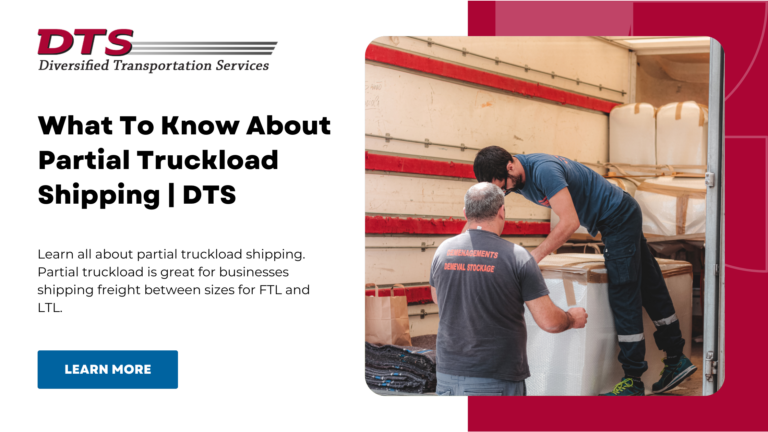
For businesses shipping across the US or cross-border, partial truck load shipping presents a valuable option that balances cost and shipment size, making it a worthwhile consideration alongside FTL and LTL methods.
Full truckload (FTL) and less-than-truckload (LTL) shipping are two popular choices, but partial truckload is another option that you may not have explored. Partial truckload shipping offers some great benefits and is worth considering when transporting larger loads.
In this post, we’ll look at the basics of partial truckload shipping, its benefits, and when you should use it.
Partial truckload shipping is a type of freight used for transporting large shipments that don’t require a full truckload trailer yet still fill a significant amount of space.
The partial truckload option sits comfortably between full truckload and less-than-truckload. It’s usually recommended for shipments weighing more than 5,000 pounds or filling 6 or more pallets.
Partial truckload logistics offers the following benefits:
When multiple trucks are used to ship large loads, the cost of transporting goods across long distances can increase quickly and strain your business’s budget in the process.
However, with partial truckload logistics, you just need one truck to transport goods efficiently. The shipment stays on that one truck the whole time without switching between vehicles.
Another major benefit of partial truckload shipping is that no freight classes are involved. Freight class is a standardized cost classification used throughout the shipping industry based on various factors (like value, weight, and density) in LTL freight shipping.
Since freight classes are unnecessary for partial truckload transportation, you have no risk of facing reclassification fees (which are a common issue). On top of that, you don’t need to put time into identifying the correct freight class for your shipment.
With partial truckload logistics, the goods stay on the same truck from the start of the journey to the end. That means shipments are handled less often than they would be with other types of shipping. Reduced handling can help reduce the risk of your shipment getting damaged during transit because your freight isn’t being moved between trucks during the shipping process.
Not only does less handling help protect shipments from damage, but it also increases the speed of the entire process. There are fewer stops and no need to switch loads between trucks along the way.
With that in mind, shipments will reach their destination quicker, and you can enjoy more efficient transportation.
When you choose partial truckload shipping, you’ll only pay for the space your freight needs on the truck. That’s a significant benefit if your business operates on a tight budget and has large loads to transport.
You should use partial truckload shipping in the following situations:
Partial truckload shipping is an excellent method to transport freight across long distances, falling between full truckload and less-than-truckload options. It can help you keep costs down, increase the efficiency of your shipping, and reduce the frequent handling that can lead to accidental damage or delays.
If you want advice about which freight services are best for your business, DTS can help. Our team can help you find the ideal shipping solutions for your budget, requirements, and goals. To find the right freight services for you, get in touch with DTS today.
Whether you're a company looking to improve one facet of your supply chain, your entire supply chain, or simply looking for a transportation and logistics consultation, we can help.